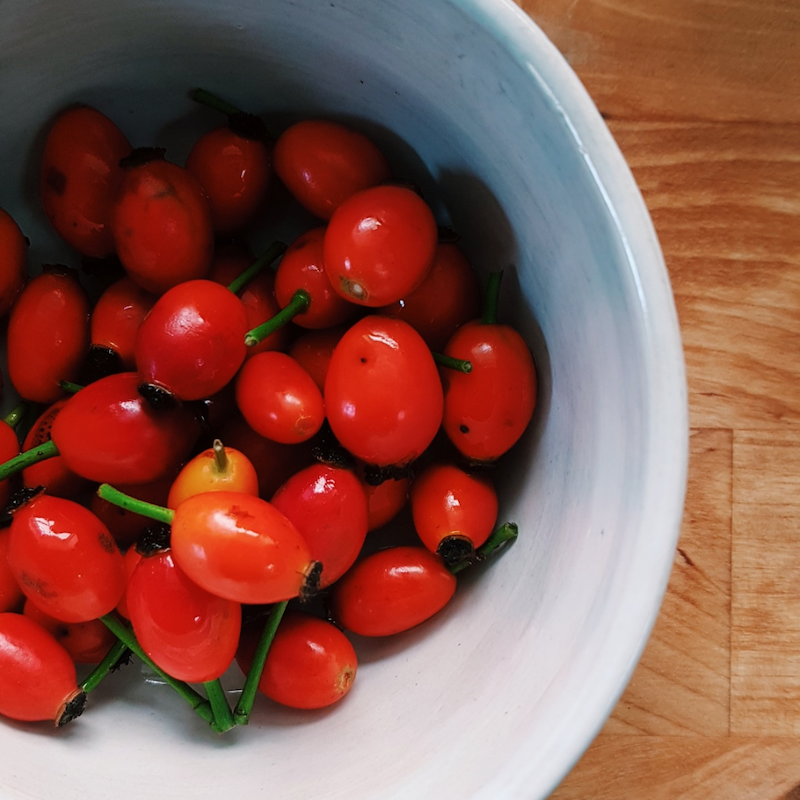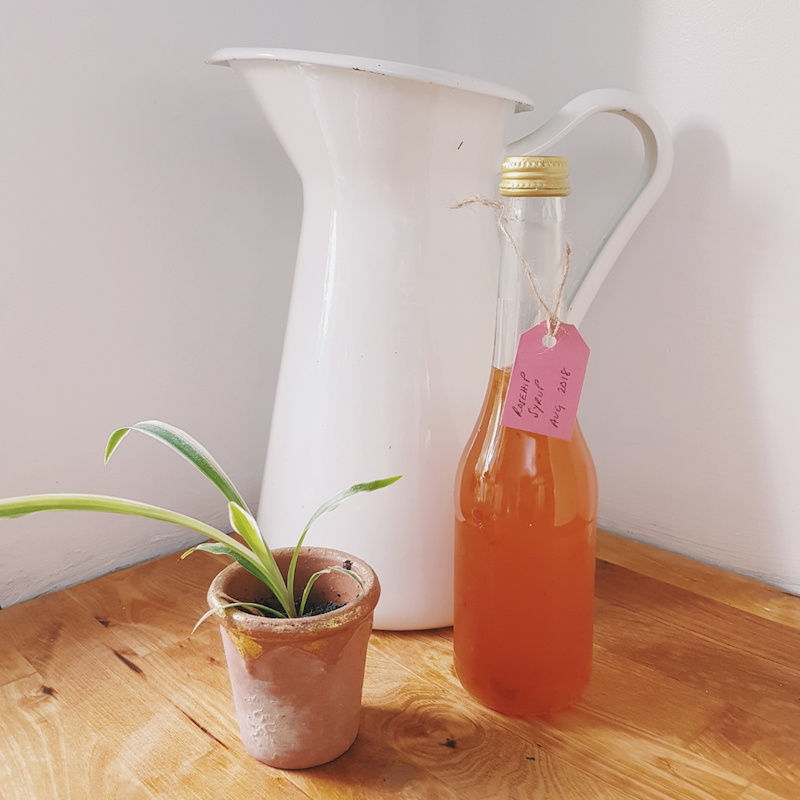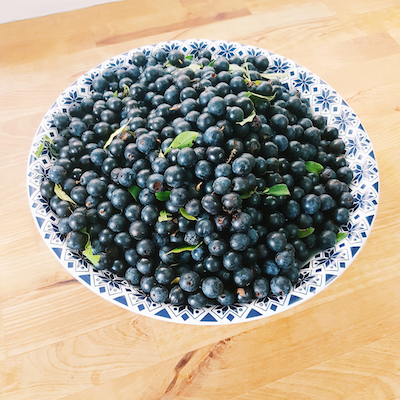Autumn's wild food bounty helps to make it one of our favourite times of the year - here are our favourite foraging recipes to prepare for the winter ahead...
 A wealth of berries and nuts can be found in autumn hedgerows
A wealth of berries and nuts can be found in autumn hedgerows
As the weather begins to crisp and the leaves turn amber and brown we see a wealth of wild berries and nuts ripening in hedgerows and on country walks. This is the signal that autumn's foraging fun is about to begin, so we picked our favourite wild food finds and how to use them:
Rosehips
 Wild rosehips
Wild rosehips
Renowned for being packed full of Vitamin C these beautiful little orangey red rosehips shine out from the hedgerow, thankfully making them easy to spot.
They are the seed pods of the wild rose often found rambling through the hedges on country lanes, but also through garden trees and plants too if you're lucky.
Traditionally they were used to stave off winter colds thanks to the vitamin-rich outer layer - they arrive at the perfect time (at the start of autumn) after all! But beware of the hairy inner seeds, they are known to be an irritant so that's why all recipes using hips involve straining through a muslin cloth.
Their flavour is fruity and slightly floral - there is a certain warmth to them that sings autumn in every sip.
Here is a classic Rosehip Syrup recipe (natural cold prevention - allegedly!), but we explore another exciting way to use them later on...
Rosehip syrup
Ingredients:
- 500g freshly picked rosehips
- 500g white caster sugar
- 1.5 litres of water
- Muslin cloth or jelly bag
- Large pan
 Rosehip syrup
Rosehip syrup
Method:
- Top and tail the rosehips then chop them - we recommend using a food processor as they can be pretty tough
- Add 1 litre water to the pan and bring to the boil.
- Add the chopped rosehips to the pan and bring back to the boil.
- Remove from heat, cover the pan with the lid and leave to steep for 30 minutes.
- Strain the liquid through the muslin (over a sieve is easiest) into a bowl/jug and set to one side.
- Add the pulp back to the pan and add the remaining 500ml of water.
- Bring it to the boil, turn off the heat and leave (with the lid on again) to infuse for another 15 minutes.
- Strain as before, combine the two lots of liquid and discard the pulp.
- Put the combined juice into a clean pan and bring to the boil and reduce the liquid by half.
- Remove from the heat and add the sugar, stirring until dissolved.
- Put the pan back on the heat and boil for 5 minutes.
- Pour into sterilised bottles.
Will keep for up to 4 months.
The syrup can be diluted like cordial, used in cocktails or used as a syrup on yoghurt and desserts, or even to accompany blue cheese! Yum.
We also came across this recipe for Raw Rosehip Syrup which we will give a try this year...
Blackberries
 Blackberries from the hedgerows of country lanes
Blackberries from the hedgerows of country lanes
Finally, the time of year when the ongoing battle with this tenacious and prickly hedgerow plant (wish it was just in the hedgerow and not invading the flowerbeds!) pays off:
From late August through to the end of October our countryside is full of nostalgia and fond childhood memories - blackberry picking, yeahy!
Rich in anti-oxidants (it is like nature knows what is in store for us in the coming months, funny that) and full of delicious sweet yet tart fruity flavours it is not surprising that there is an abundance of delicious blackberry recipes.
Here is our favourite for preserving some of those delicious juices for the festive season:
Autumn hedgerow gin or vodka
Ingredients:
- 500g blackberries, washed and gently patted dry
- 300g sloes, washed, pricked and frozen overnight (to mimic the first frost)
- 200g rosehips, topped and tailed and chopped in half
- 250g white sugar (granulated or caster)
- 1 litre of gin or vodka (nothing too fancy, but decent quality)
- Large Kilner jar
- Muslin cloth
Method:
- Add the fruit and sugar to the kilner jar
- Pour over the gin or vodka
- Seal the jar and give it a shake
- Store in a cool, dark place
- Shake every couple of days to ensure the sugar has dissolved
- After one month strain the liquid through a muslin cloth over a sieve
- Pour the vodka into sterilised bottles
Makes a great alternative to standard gin a Bramble cocktail, is delicious topped with soda water or makes a truly fabulous addition to Prosecco!


Sloes
 Sloes on the blackthorn bush
Sloes on the blackthorn bush
Sloes are the fruit of the blackthorn bush, found in most British hedgerows, and are ripe for picking from September time onwards. If they are ready they will be a deep blue/purple colour and just starting to give when you squish them between your fingers.
Watch out for the long thorns on the branches though, especially if picking with children.
Speaking of which, the recipe we have selected for sloes isn't the classic Sloe Gin, but instead a cordial - to please those little helping hands and reward them for a full day of foraging.
Though instead of mixing with water, soda or lemonade it can be a great addition to many spirits and wine too!
Sloe cordial
Ingredients:
- 500g sloes (washed, pricked and frozen overnight)
- 500ml water
- Juice of 1 lemon
- 400g granulated white sugar
- 1/2 tsp citric acid (optional to preserve for longer)
- Muslin cloth
You can buy citric acid in a range of places, such as Wilkinsons, Amazon and some chemists.
Method:
- Add the sloes, lemon juice and the water to a large pan and bring to the boil
- Simmer for 15 minutes, crushing the sloes as they cook
- Line a sieve with a muslin cloth and strain the mixture
- Add the juice back and sugar to a clean pan
- Bring to the boil
- Simmer for 10 minutes or a little longer if you want more of a syrup consistency
- Take off the heat and add the citric acid, if using, stir it in
- Immediately pour into sterilised bottles
- Leave to cool and store in the fridge or cool cupboard
 Hand harvested sloes
Hand harvested sloes
If you are new to foraging or want to become more of an expert take a look at the foraging and wild food workshops listed on our site.
And if you enjoyed reading this you might like to read some of our other recipe blogs >



